7 of the best non-fiction books for KS1 and 2

From dinosaurs to Scratch, women in science to evolution, here are some great factual texts to inspire kids…

- by Teachwire
- Classroom expertise and free resources for teachers

There are a number of certainties when it comes to children’s reading tastes. Roald Dahl, Harry Potter, Diary of a Wimpy Kid, David Walliams – these are almost universally popular. Ask most kids if they’ve read and enjoyed them, you’ll probably get a positive response.
But we also know that kids are unique. And while one might love a bit of Gangsta Granny another might much prefer The Hitchhiker’s Guide to the Galaxy, Little Women or The Boy in the Striped Pyjamas. One might love all these books and more, another might hate all books ever written.
But thankfully schools today are much more in tune with this than the old prescriptive approach of forcing Great Expectations on children the minute they’ve mastered writing their own name.
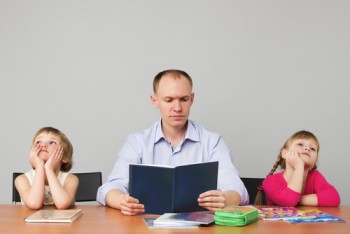
There are great stories of all genres, for all types, there are short stories, book series, poetry collections and of course non-fiction texts. Non-fiction is not only great in its own right, but it can be a great hook for reluctant readers who may feel more relaxed without having to take in a long story and potentially a more-creative prose style.
So we’ve picked out a selection of our favourites from the last year or so that you may have missed, and that are well worth giving a try.
1. 100 Events in History
Jo Cotterill and Cathy Brett
Dorling Kindersley, hardback, £12.99, ages 8+ years
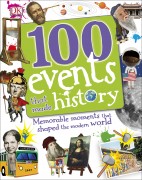
You can generally rely on a publication from Dorling Kindersley to score highly on both the quantity and quality of the information it contains; and you can be sure, too, of bright, appealing page designs that make all those carefully researched facts and figures a pleasure to absorb.
This book is no exception – taking its readers on a thrilling ride through history and picking out 100 of the most influential moments to celebrate, wonder at and consider along the way. From significant individuals like Julius Caesar and Rosa Parks; through battles and bust-ups including the defeat of the Aztecs and Incas and the global banking crisis; to amazing achievements such as the development of writing and the invention of the aeroplane – the scope of this overview is positively dizzying, with plenty of fascinating details under every heading.
Budding historians will love it; and it could easily persuade those who claim to find the subject ‘dull’ to become fans of unfolding the past.
2. Cool Scratch Projects
Sean McManus
In Easy Steps Limited, paperback, £10.99, ages 9+ years
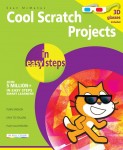
A companion title to McManus’ earlier work, Scratch Programming in Easy Steps, this can either be used to build on the knowledge and skills acquired from the first book, or on its own.
As the title suggests, the focus here is on projects with real ‘peer group’ appeal for young minds, from building a drum machine to producing fun, stop-motion animations.
As before, the explanatory language is beautifully clear, with jargon kept for when it’s absolutely necessary; youngsters of most abilities should be able to follow the instructions with minimal supervision – and the most capable will soon be taking what they’ve learnt to even more exciting places.
3. How to Make a Human Out of Soup
Tracey Turner
Hodder & Stoughton, paperback, £6.99, ages 9+ years
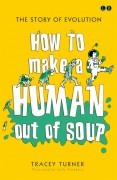
It’s not intended as a textbook, but any teacher musing how best to cover the ‘evolution’ aspect of the new Y6 programme of study for science could certainly make a worse start than by sitting down with this enjoyable and comprehensive overview of the subject, ably put together by Tracey Turner and given added zing by Sally Kindberg’s exuberant drawings.
Not only are Turner’s explanations models of clarity, they are delivered with an irreverent humour that children will love, and therefore serves to reinforce the factual information being conveyed still further.
Moreover, she scatters the text liberally with activities that could easily be borrowed for the classroom, including quick quizzes, an idea for fossil making with modelling clay and PVA glue, and a rather brilliant puzzle aimed at helping children understand the concept of genetic inheritance through studying ‘zorgles’.
4. Lesser Spotted Animals
Martin Brown
David Fickling Books, hardback, £12.99, ages 7+ years
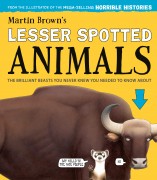
Fans of the Horrible Histories series will instantly recognise the style of illustration in this irresistible non-fiction book – but in this case, the hugely talented Martin Brown is responsible for the words and research, as well as the accurate, yet irreverent, pictures.
Packed with intriguing, yet easily digestible, chunks of information about each featured creature, alongside snappy fact files full of satisfying stats and quirky observations, this is a real treat for anyone who is interested in the natural world – especially if they reckon they already know pretty much all there is to know about zebras, lions, elephants and sharks.
5. Women in Science
Rachel Ignotofsky
Wren & Rook, hardback, £12.99, ages 8+ years
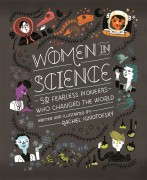
A New York Times bestseller, this gorgeously illustrated book details the lives and achievements of 50 fearless women whose contributions to the fields of science, technology, engineering and maths changed the world.
Starting with Hypatia, a mathematician, astronomer and philosopher who lived in Ancient Egypt and was eventually killed for her ‘pagan’ teachings, Rachel Ignotofsky introduces us to a succession of extraordinary individuals, each of whom has helped us better understand the universe and our place in it.
Your pupils may already be familiar with Marie Curie and Jane Goodall – but have they heard of Katherine Johnson, the African-American mathematician who calculated the trajectory of the Apollo 11 mission to the moon? And they may know that Hedy Lamarr was a Hollywood actress – but do they realise she was also a genius inventor?
Girls are still underrepresented in GCSE STEM classes – sharing books like this, as early as possible, is a powerful way to help address that disparity.
6. What’s so Special About Tyrannosaurus Rex
Nicky Dee
Dragonfly Group, £5.99, ages 6-10 years)
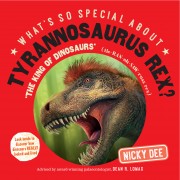
There is no shortage of picture books for very young children about prehistoric creatures – and encyclopedia-style reference titles for older readers with similarly paleontological tastes are also very easy to find.
According to the publisher, this smart little publication is part of a series aimed squarely at an audience that falls between those two categories, each taking an in-depth look at one specific dinosaur and offering new insights into how it really appeared, lived and interacted with its environment.
The information is detailed and bang up to date, featuring an array of fascinating facts based on the latest research and verified by award-winning UK paleontologist Dean R Lomax.
Sophisticated but accessible infographics encourage active engagement with the content, and the striking artwork includes anatomically correct illustrations of models built especially for this project. All in all, it’s a classy package, with a rather splendid website (specialdinosaurs.com) to explore as a bonus.
7. Why is Art Full of Naked People
Susie Hodge
Thames & Hudson, hardback, £12.95, ages 7+ years
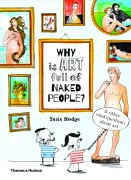
Great art should provoke curiosity as well as awe; yet trying to find out more about it can be fraught with difficulty.
As adults, we are especially prone to keeping our queries to ourselves – afraid, perhaps, of being exposed as someone with a fundamental inability to appreciate a beautiful painting, or tell a work of staggering genius from the naive daubings of an amateur.
And this in turn can lead to us dodging enquiries raised by children, just in case we give the ‘wrong’ answer.
Thank goodness, then, for Susie Hodge, who has no such inhibitions. In this fascinating, fun, and extremely accessible book, she highlights many of the most common questions asked about the world of art, responding to each of them with an engaging combination of scholarly expertise and friendly enthusiasm alongside examples of famous pieces to illustrate her points.
With skill and humour, Hodge simultaneously manages to demystify the gallery and encourage both respect and wonder for what it contains – it’s a brilliant achievement.










